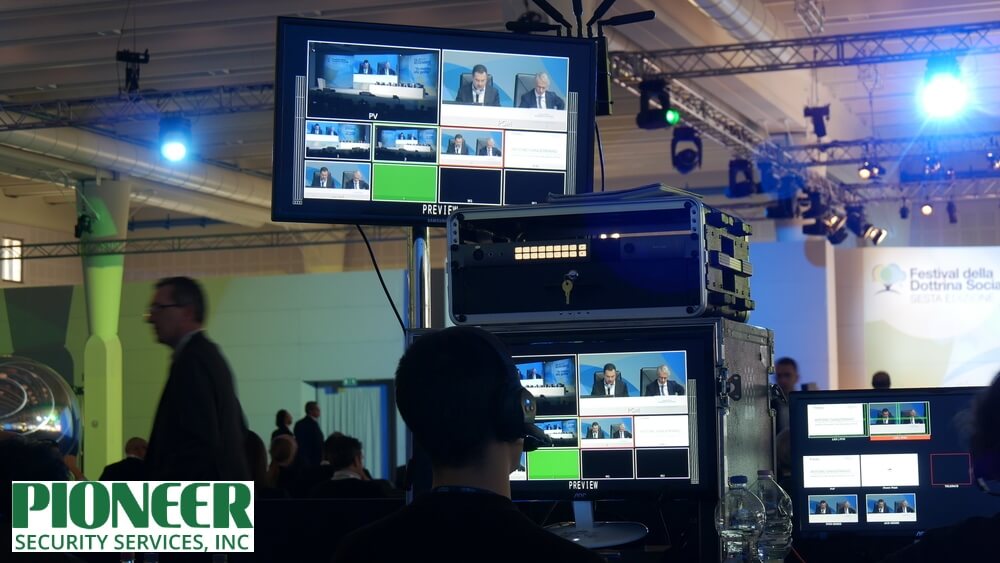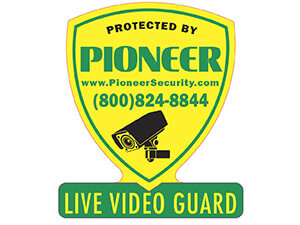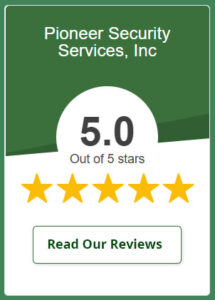Compliance in live video monitoring systems refers to ensuring that the use of video, including its capture, storage, access, and processing, meets all relevant laws, industry standards, and ethical norms. This means respecting privacy rights, following data protection laws (such as GDPR), ensuring workplace safety under OSHA or similar authorities, meeting disability access laws, and complying with insurance, legal, and record-keeping requirements.
For businesses, homeowners, and service providers, it’s critical: non-compliance can lead to heavy fines, lawsuits, loss of trust, and reputational damage. As of early 2025, over 2,245 fines have been issued under the GDPR since its enforcement, totaling approximately €5.6 billion, demonstrating the rigorous enforcement of data protection across various industries.
In this article, we’ll explore how compliance applies to live video monitoring in terms of privacy, legal standards (including the ADA and OSHA), insurance implications, and best practices in data handling.
What Compliance Means in Live Video Monitoring Systems?
Compliance in live video monitoring means more than just having cameras in place. It requires that all monitoring practices satisfy legal, ethical, and industry standards across several dimensions:
- Privacy and Data Laws: This ensures that video capture, storage, and use respect laws governing personal data (who can be recorded, under what conditions, retention, deletion)
- Accessibility Requirements: Signage and areas under surveillance must be accessible to and usable by people with disabilities, with proper notices and compliance with standards like the ADA
- Workplace Safety: Systems must not create hazards; monitoring must respect employee rights under OSHA (or equivalent), and safety-related monitoring should help prevent harm without infringing privacy
- Insurance and Industry Standards: Many insurance policies require secure handling of footage, documented procedures, and compliance with regional or sectoral standards
Together, these dimensions protect individuals’ rights and help organizations avoid legal risk and reputational damage.
Key Legal and Regulatory Standards for Monitoring Systems
Below are some essential legal frameworks that live video monitoring systems need to align with. Understanding them helps ensure compliance in different settings. These standards vary by industry and geography, but all play a role in shaping how video surveillance is deployed and managed:
GDPR and Data Privacy Regulations
Under the EU’s General Data Protection Regulation (GDPR):
- Recording or processing video with personal data requires a lawful basis (such as consent, contract, vital interests, public interest, or legitimate interests).
- Consent must be freely given, specific, informed, and unambiguous.
- Retention of video data must adhere to the principle of storage limitation: it is kept only as long as necessary for its intended purpose and then securely deleted.
- Data subjects have rights such as access to recordings (Article 15), correction, and erasure (Article 17 – “right to be forgotten”).
For international companies, GDPR has extraterritorial effect: even if the business is outside the EU, if it processes data of EU residents in specific contexts, it must comply.
HIPAA and Healthcare Security Requirements
When video monitoring is used in hospitals, clinics, or other healthcare settings in the U.S., HIPAA rules apply if Protected Health Information (PHI) is captured. Key points include:
- Video systems must secure PHI just like any other sensitive health record. This means controlling who can access stored video, ensuring logs/audit trails, and protecting against unauthorized disclosure.
- Avoid recording in sensitive or private spaces (such as exam rooms or patient bedsides) unless explicitly necessary and with the appropriate consent/authorization.
- Use Business Associate Agreements when third parties handle stored/processed video data under HIPAA.
State and Local Privacy Laws
In the U.S., beyond federal laws, many states have their own privacy statutes or rules concerning surveillance, audio recording, and consumer data. Examples:
- California: The California Consumer Privacy Act (CCPA) and its amendment, the California Privacy Rights Act (CPRA), grant California residents rights over their personal information, including the right to know what data is collected, how it is used, and the ability to delete, correct, and limit the sharing of this information.
- Consent laws: Some states require all-party consent for audio recordings; others require that only one party (such as the person installing the device) consent, depending on whether the conversation is private.
These local laws often dictate where cameras can be placed, whether audio recording is allowed, and what notices must be posted.
ADA Compliance for Signs and Plaques in Monitoring
Accessibility rules under the Americans with Disabilities Act (ADA) require that signage related to monitoring (e.g., notices that surveillance is in use, warning signs) and permanent room signs or plaques comply with design and placement standards. Some requirements:
- Signs that identify permanent rooms or spaces (e.g., restrooms, exits) must have raised characters and Grade-2 Braille.
- Visual contrast, non-glare finishes, and specific mounting locations (e.g., beside the latch-side of doors, at an accessible height) are mandated.
- Directional/informational signs (for surveillance notices, etc.) may need to follow visual requirements, even if not tactile, depending on whether they are “interior room signs” or just directional/informational.
Workplace and Industry Compliance Requirements
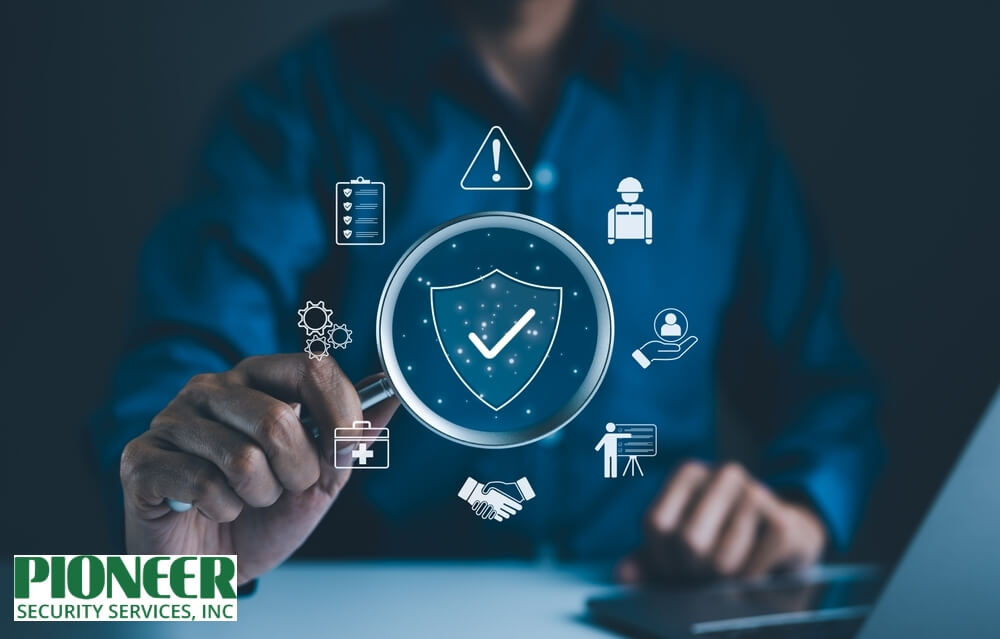
Businesses face specific, often legally mandatory, requirements when deploying live video monitoring. These rules ensure that monitoring is used safely, consistently, and in ways that support organizational goals while respecting regulations. Below are key areas where industry compliance plays a central role.
OSHA Safety Standards and Monitoring
Video monitoring plays a vital role in helping employers comply with OSHA’s workplace safety obligations. By capturing real-time footage, businesses can identify unsafe behaviors, spot hazards before they cause accidents, and gather visual documentation that supports corrective action.
OSHA recognizes video evidence as valuable for inspections and investigations. For instance, its directive Case File Documentation for Use with Videotapes and Audiotapes highlights the importance of recorded footage in accurately reflecting workplace conditions. Monitoring can also support programs like Video Exposure Monitoring (VEM), which pairs video with exposure readings to better understand the risks associated with employee tasks.
To remain compliant, businesses must strike a balance between safety goals and privacy rights. Monitoring should never occur in restrooms, locker rooms, or other areas where employees have a reasonable expectation of privacy. Instead, cameras should focus on production floors, warehouses, construction zones, or other high-risk work areas.
Insurance Industry Requirements
Insurance providers often tie coverage terms and pricing to the presence of effective monitoring systems. Live video monitoring can demonstrate that a business is actively reducing risks of theft, vandalism, or workplace accidents. This risk reduction can translate into lower premiums, improved coverage options, or faster claims resolution.
For verification, insurers typically expect evidence that monitoring is both functional and continuous. This may involve documented logs showing camera uptime, secure footage storage, system testing schedules, and incident reporting protocols. Some insurers also specify minimum retention periods for recorded video to ensure that footage is available in the event of a claim.
Meeting these standards not only helps businesses save money but also strengthens their compliance posture with insurers, reducing disputes over claims. While exact requirements vary by provider and industry, the principle remains the same: insurers reward businesses that can prove they are proactively managing risks with reliable monitoring systems.
Financial and Banking Regulations
Financial institutions operate under some of the most stringent monitoring requirements, since lapses in security can lead to large-scale financial losses or fraud. In these environments, live video monitoring is not optional; it is a regulatory expectation.
Under the PCI DSS (Payment Card Industry Data Security Standard), requirement 9.1.1 obligates institutions to monitor and control access to sensitive areas such as data centers, server rooms, and cardholder processing environments. Video recordings must cover entry and exit points and be retained for a period that allows for reviews and investigations.
In addition, the PCI ATM Security Guidelines outline surveillance expectations for ATMs, ensuring that devices are monitored to detect tampering and prevent skimming attacks.
Beyond PCI, financial firms subject to FINRA Rule 3110 are required to maintain robust supervision and record-keeping standards. While this rule primarily governs securities firms, video recordings used for compliance or oversight purposes must meet exacting expectations of reliability, accessibility, and proper retention.
Data Management and Retention Rules
Live video monitoring isn’t just about capturing footage; it’s about handling that data responsibly. Every recording has legal, ethical, and operational implications. Organizations must define how long videos are kept, where they are stored, and who has access to them.
Without these rules, companies risk violating privacy regulations, facing legal challenges, or losing critical evidence. Proper retention and management practices ensure that video serves its intended purpose, supporting safety, compliance, and investigations, without becoming a liability.
Video Retention Timeframes
Retention time depends on the industry and local laws. Common standards are:
- Many institutions retain footage for 30-90 days unless an incident triggers more extended storage. For example, Princeton University’s policy holds most security camera footage in that range.
- Law enforcement body-worn cameras often require at least 90 days, with many jurisdictions ordering 180 days or more for recordings related to significant incidents or arrests.
- Financial institutions or healthcare providers may have more extended retention periods (sometimes multiple years), especially when litigation, fraud investigations, or privacy laws demand it.
Secure Storage and Encryption Practices
A few key practices are essential for compliance in storage:
- All stored video should be encrypted in transit and at rest. Encryption ensures that if data is intercepted, it remains unreadable to unauthorized actors.
- Use of hardened or certified cloud services that meet recognized security standards (e.g., ISO/IEC 27001, SOC 2) helps satisfy regulatory and audit requirements.
- Secure storage should include protection against data corruption, tampering, or unauthorized deletion. Redundancy and backups are also part of good practice.
These measures are not optional. Many data protection frameworks (like GDPR, HIPAA) require “appropriate technical and organisational measures” to protect personal data.
Access Controls and Audit Trails
Limiting who can access video recordings and tracking that access is critical:
- Only authorized personnel with defined roles should access stored footage. Access must be controlled via credentials, permissions, and role-based access control systems.
- Every access should be logged, including the user’s identity, the footage accessed, the date and time of access, and the purpose of the access. Audit trails help demonstrate accountability and can be crucial in the event of a dispute or legal investigation.
- Regular review of these logs helps detect misuse, unauthorized access, or policy violations.
Common Compliance Risks in Live Video Monitoring
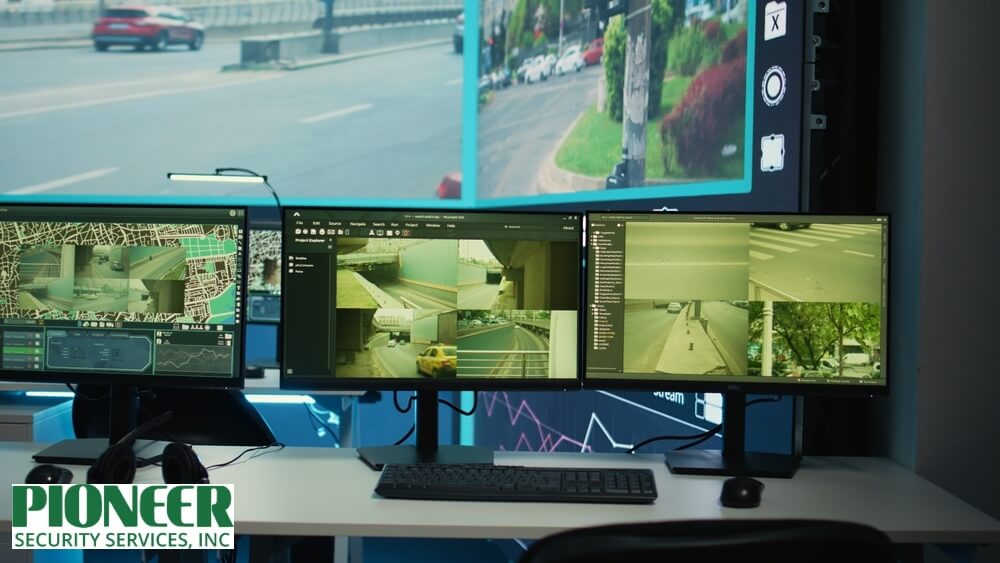
Even when systems are well-designed, some risks can still undermine compliance. These risks often arise from poor implementation, inadequate oversight, or policy gaps.
Understanding them is crucial because live monitoring encompasses both legal obligations (such as privacy laws and workplace safety standards) and ethical considerations (including fairness and transparency). If left unchecked, these risks can lead to fines, lawsuits, or loss of trust among employees, customers, or the public.
Recording Without Proper Consent
Recording without informing those being monitored or without a legal basis can cause violations:
- In workplaces and homes, employees or occupants generally must be informed that monitoring is taking place. Consent may be required, depending on jurisdiction.
- Public spaces often have different rules, but audio recording (or video with identifiable audio) usually has stricter consent rules.
- Violating consent rules can result in fines, legal action, or suppression of video evidence.
Poor Data Security and Leaks
Failing to secure video data can lead to serious consequences:
- A notable example is the FTC’s action against security camera firm Verkada for failing to encrypt video, use strong passwords, and secure network access. The company exposed sensitive video footage and user data.
- Leaks or breaches can trigger regulatory penalties under the GDPR, state privacy laws, or HIPAA, as well as damage to reputation and potentially lead to lawsuits.
Non-Standardized Monitoring Practices
Using providers or practices that do not meet established standards can create risk:
- Non-certified providers may use insecure hardware/software. They may not comply with regulatory requirements.
- Lack of consistent policies (on retention, access, encryption) across different sites/managers leads to gaps in compliance.
- Incident response may become difficult when footage is not uniform (format, quality, metadata), reducing its usefulness in investigations or legal proceedings.
How to Ensure Your Monitoring System Is Compliant?
Implementing monitoring systems is one thing. Ensuring they stay compliant over time is what really matters. A compliant system is one that not only meets standards when initially set up, but also continues to meet them through ongoing audits, staff behavior, contracts, and certification. The goal is to build durability, trust, and legal defensibility into the system, enabling it to adapt as laws, risks, and technologies evolve.
Work With Certified and Licensed Providers
Choosing a provider with recognized licenses and certifications assures that their hardware, operations, and procedures meet objective safety and quality standards.
- Look for certifications such as UL 827 (Central Station Alarm Services) and UL 827B (for managed video monitoring services), as well as other relevant UL standards. These require providers to meet criteria for equipment, redundancy, response time, and reliability.
- Check whether the provider’s video monitoring station is UL certified or UL listed. This ensures independent verification of the facility, staff, and service delivery.
- If local or state laws require specific licenses for surveillance or security services, ensure those are in place.
Regular Compliance Audits and Updates
Even certified systems can drift out of compliance unless inspected periodically. Audits help identify gaps and ensure that standards are met.
- Conduct internal audits (at least semi-annual) and external audits (annual or by an independent body). For example, the UL Managed Video Monitoring Certification includes yearly audits of facilities and service delivery.
- Update system software, firmware, encryption protocols, and policies whenever relevant laws or threats change.
- Maintain documentation of audit results, remediation actions, and verification that fixes were implemented.
Staff Training on Privacy and Security Policies
Technology alone cannot ensure compliance. Human behavior plays a decisive role.
- Train all staff (operators, maintenance, management) on privacy laws (GDPR, CCPA, HIPAA, etc.) and internal policies (who may view video, when, and how consent works).
- Make security hygiene part of the culture: use strong passwords, manage access credentials, and recognize phishing and social engineering attempts.
- Provide refresher training periodically (once a year or when policy or regulation changes).
Transparent Contracts and Policies
Your relationship with providers and stakeholders must be governed by clear, written agreements and policies that reflect compliance expectations.
- Contracts with monitoring service providers should specify certifications, retention periods, data access rules, audit rights, and data protection measures.
- Privacy policies or notices shown to those being recorded should clearly state who is recording, for what purpose, how long the footage is stored, and how individuals can make requests (such as access, deletion, etc.).
- Ensure the terms are consistent with public rules and legal requirements (e.g., GDPR, state privacy laws).
Benefits of a Compliant Monitoring System
A monitoring system that is compliant with laws, regulations, and best practices delivers tangible benefits. It reduces risk, improves reputation, and can lead to cost savings. Below are some of the key advantages you get when your system meets compliance standards.
1. Avoiding Legal Fines and Penalties
Non-compliance can carry huge fines. Under the GDPR, violations may result in penalties of up to €20 million or 4% of the company’s global annual turnover, whichever is higher.
For example, Meta Platforms Ireland was fined €1.2 billion by the Irish Data Protection Authority for unlawfully transferring EU user data to the U.S. without adequate protections.
2. Building Trust With Employees and Customers
When businesses are transparent about their monitoring practices and ensure they respect privacy and access, it builds trust. Employees who believe their privacy is respected tend to exhibit higher morale and lower turnover rates. Customers are more likely to do business with firms that are perceived as ethical and law-abiding.
Compliance also means having clear policies, signage, and communication that demonstrate your commitment to data protection. That kind of professionalism can differentiate your business objectively in competitive markets.
3. Eligibility for Insurance Discounts
Complying with monitoring and security standards can reduce insurance costs for many businesses and homeowners. Insurance companies often offer lower premiums for properties with professionally monitored security setups.
In-home insurance, for instance, having a monitored security system can result in a discount of 2% to 5%, depending on the insurer and system configuration.
What is the Future of Compliance in Video Monitoring?
Compliance in video monitoring is not static. Several trends are shaping what organizations will need to watch for:
- AI and Machine Learning features (facial recognition, behavior prediction) are coming under stricter regulation. Many jurisdictions are proposing or passing laws that restrict or ban the use of facial recognition in public or semi-public video surveillance.
- Stricter Privacy Laws: More U.S. states are enacting comprehensive privacy laws; global regulatory bodies are harmonizing data privacy rules (e.g., GDPR-style laws appearing in more countries).
- Transparency Requirements will increase, with a focus on clearer disclosures, auditability, and individuals’ rights (including access, deletion, and objection).
- Standardization of Certifications: Certifications such as UL 827/827B, ISO/IEC standards, and cybersecurity-focused UL CAP standards are likely to become baseline expectations rather than optional differentiators.
Ensure Your Monitoring System Stays Compliant with Pioneer Security
Compliance in live video monitoring is more than a legal requirement. It safeguards businesses and homeowners from fines, protects sensitive data, supports workplace safety, and builds trust with employees and customers.
By meeting standards for privacy, accessibility, and data handling, you not only reduce financial and legal risks but also show a clear commitment to professionalism and accountability.
As regulations around monitoring and data security continue to evolve, having the right partner is essential. Pioneer Security helps clients stay ahead of compliance challenges with certified solutions, secure data practices, and expert guidance. To ensure your monitoring system remains fully compliant and future-ready, consult with our team of specialists today.
Frequently Asked Questions
What laws govern live video monitoring in the U.S.?
U.S. monitoring is regulated by federal and state laws. Federal rules include privacy protections under the ECPA and workplace safety under OSHA. The ADA also affects signage, visibility, and accessibility. States add rules on audio, biometric data, notice, and consent.
Do I need consent to monitor employees while they are at work?
It depends on state laws and the type of monitoring. Video without audio in non-private areas is usually allowed, but audio often requires consent. Employers must provide notice/signage and avoid private areas like bathrooms or locker rooms to stay compliant.
How long can I legally store video footage?
Retention varies by industry, state, and incident type. Commonly, footage is kept 30–90 days. For investigations, legal obligations, or OSHA cases, storage can extend to a year or more. Always check local regulations and industry rules.
What certifications should a compliant provider have?
Look for providers with recognized certifications such as UL 827/827B for video monitoring, ISO/IEC 27001 for information security, and any required state or local licenses. Annual audits help maintain continued compliance.
Can non-compliance affect my insurance claims?
Yes, insurers may deny claims if systems aren’t compliant or if footage is missing. Proper certifications, documented retention policies, and secure storage strengthen claims and reduce denial risk.
How do I know if my monitoring system is compliant?
Check that the provider holds certifications, has retention policies, uses secure storage and encryption, maintains audit logs, obtains required consent, and performs regular audits. Address any gaps to stay compliant.

